#henrik pontoppidan
Text
"If it is correct that the way to Hell is paved with good intentions, so the path to Heaven necessarily must be paved with our worst. There is more truth in that than can be seen at first glance. For, as is well known, the body's march through life is continually interrupted by falls; so, too, our soul's development towards fulfillment is a constant fall through sin, from which we are raised by an instinctively active self-preserving power of divine origin."
— Lykke-Per, Henrik Pontoppidan (trans. Naomi Lebowitz)
7 notes
·
View notes
Text

'Portrait of Henrik Pontoppidan (1857-1943)' as painted circa 1908 by Peder Severin Kroyer (1851-1909). I like the sitter's grey bits...
18 notes
·
View notes
Text
Books of 2023
At the end of the year, I look through my diary where I note down the books, I have read this year and gather them in a list. I read quite a lot (this year, I’ve read 57 books) – naturally, some are better than others. Here are my favorites from 2023.
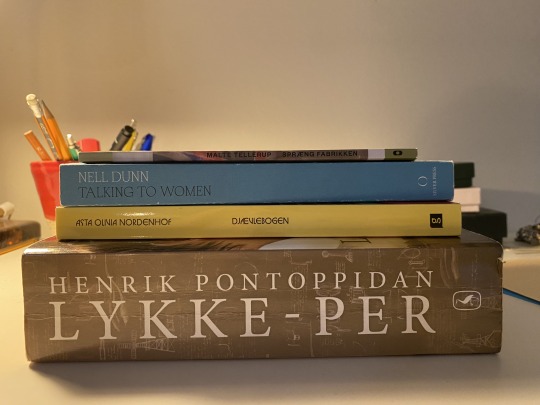
Some of the books but not all because this year, I borrowed a lot of books from the library and from my friends who all have great taste.
Janet Malcolm: In the Freud archives (1984) and The journalist and the murderer (1989)
I’ve been introduced to many of my favorite authors by my friend Nanna, who in the beginning of this year lent me In the Freud archives, a journalistic encounter of a conflict in the psychoanalytic milieu in New York about Freud’s legacy, more specifically, about Freud’s relation to the seduction theory. The book reads like a crime novel while also asking fundamental psychoanalytic questions. Why does it matter so much what Freud thought about the seduction theory, I thought to myself at the beginning of the book. Quite a lot, it turns out. The journalist and the murderer changed the way I think about interviewing and representations, and I think everyone who works with written representations of people should read this. I’ve been schooled in thinking about ethnographic representations through a political and decolonial lens but The journalist made me think about it through psychoanalytical terms as well – the impossibility of representing others reflect the impossibility of knowing yourself fully.
Nell Dunn: Talking to women (1964)
I finished this book in January when I was on a writing retreat in Skagen at an old refugium. Outside, it was cold and windy, the days were short, I sat inside by my desk, attempting to finish an article. At night in bed, I read Talking to women, a collection of interviews Dunn made with women she knew about love, work, motherhood – in other words, about life. Although the interviews are from the early ‘60s, they convey recognizable aspects of womanhood, both the pleasures and the pain. Dunn’s interview isn’t the detached style of a journalist or a sociologist but that of a friend: she intervenes, discusses, comforts her subjects, resulting in the interviews also demonstrating female friendships.
Elena Ferrante: Days of abandonment (2002)
This is the first Ferrante book I’ve read outside of the Neapolitan quartet. I think it’s one of the bravest books I’ve read about what love can do to you – I’ve written about the book’s qualities in another blogpost, so I won’t say much more about it, just that it shook me deeply with its painful depictions of betrayal, disappointment, and jealousy.
Henrik Pontoppidan: Lykke-Per (1898-1904)
My stepmum gifted me this book years ago but I’ve never gotten around to reading it until this summer, expecting it to be one of those boring classics you are forced to analyze in Danish class. I never heard much about it what it is actually about: the story’s hero, Lykke-Per, grows up the son of a very conservative priest in Western Jutland but early on rejects his family’s way of living, and decides to move to Copenhagen and study engineering. Here, he befriends several members of the establishment, makes great engineering plans for Denmark, and tries to marry into the bourgeoise and leave his background for good. However, in my opinion, the real hero of the book is Per’s fiancé, Jakobe, the extremely intelligent daughter of a wealthy Jewish family who’s trying to find her way in the man-dominated world she feels uncomfortable in. It's a book both about the modernization of Denmark, as well as an existential story about getting what you want and then not wanting it, about human relationships, about antisemitism, about women’s struggles and a page turner? I think I’ll return to this book in the future.
Fleur Jaeggy: Sweet days of discipline (1991)
I love ominous books about communities of girls and women, and this was no exception. It takes place in a Swiss boarding school and is written in the first person, but the narrator remains elusive, impossible to grasp outside of the group of women. “When you’re in boarding school you imagine how grand and free the world is, and when you leave, you’d sometimes like to hear the sound of the school bell again”. More Fleur Jaeggy in 2024!
Malte Tellerup: Spræng fabrikken (2023)
I couldn’t stop 1) thinking about this book and 2) telling everyone who would listen about it. It’s a very short book which a reviewer called ‘anti-literature’ – it’s about three young people living on a small farm where they experiment with regenerative agriculture when they are told that they will have to leave the land due to the neighboring chemical factory expanding. They give up their farming and instead start making bombs for attacking the factory. I’m planning on writing a separate post on this book, so I won’t say much more other than this being the best piece of ‘climate literature’ I have read.
Asta Olivia Nordenhof: Djævlebogen (2023)
Nordenhof was maybe the first contemporary author I read who demonstrated how literature can be political and personal at the same time with her poetry book “det nemme og det ensomme” (the easiness and the loneliness). I’ve longed for this book, the second in a planned septology, since she published the first one in 2020 and read it in one setting. It’s about the possibility of love under capitalism, about money, sex work, strange encounters and mixes the novel with poetry. Here’s (a badly translated) part of the poem which makes up the introduction in which she describes her troubles with writing the book:
“my motto/which I had forgotten/while I was struggling/to write a/real book/about the inner life of great men/my motto/here it is/it is simple/and great/fuck men!/when I remembered this/I remembered/that I can do/what I want.”
Natalia Ginzburg: All our yesterdays (1952)
Sally Rooney described this as a perfect novel, and I would agree. It’s about a family living in fascist Italy with the youngest girl of the family as the protagonist who however doesn’t take up more space in the novel than the rest of its characters which the novel follows through the Second World War as some of them join the resistance and others find other ways to cope with fascism. The novel explores the impact fascism and war have on different people, without viewing this as a reflection of essential character traits or depicting some as inherently evil and others as inherently good. Ginzburg has an eye for the small things that make up people – certain turns of phrases, bodily manners, temperaments – and the necessarily ever-changing relationships between them, writing about these with great feeling and humour. I enjoyed the way the novel treats politics and politicization not primarily through public life, but in the personal relationships of the characters.
I’m quite satisfied that only one (!) US-American author made it onto this list. Next year, I’d like to read more authors from the Global South and perhaps even more POETRY. I also want to continue reading the same books as my friends because literature is, truly, best when discussed with others. Until then, I’m off to buy champagne and lemons for New Year’s Eve – see you!
#feminist literature#elena ferrante#natalia ginzburg#henrik pontoppidan#asta olivia nordenhof#fleur jaeggy#contemporary literature
0 notes
Note
🐠 author who inspires you
🌷 writing achievement you want to brag about
🌤 name the hardest thing you've had to do for writing
🍧weirdest place you’ve written
🐠 authors who inspire you
oops where did the plural come from lol. anyway theres some authors i fucken love off the top of my head: jerzy kosinski, carlos ruiz zafon, robin hobb, michael j. sullivan, dostojevskij, jan gillou, khaled hosseini, neil gaiman, brandon sanderson, camus. i used to read a lot of neal shusterman as a teen so hes got a place in my heart. also for danish authors yall have never heard of: jussi adler-olsen, henrik pontoppidan, leif davidsen, klaus rifbjerg, dan turell and cecil bødker
🌷 writing achievement you want to brag about
mm is at 130k words ayyy :>
🌤 name the hardest thing you've had to do for writing
persisting, esp in the beginning. if we're talking writing itself, it's outlining, but i've overcome that particular hardship by simply never doing it
🍧weirdest place you’ve written
writing writing is contained to my desk or on the floor, which isn't that weird. if you count writing down bits in the notes app, idek. at church, in the woods, hiding behind the shed to smoke, etc. pretty sure i wrote stuff down in the ER after my chisel incident? does that count lol
#asks#ask game#i like how im all weeee psych thriller psych thriller. meanwhile the only thriller authors i named are davidsen and adler-olsen
5 notes
·
View notes
Text
Karl Adolph Gjellerup- [Viajeros hacia la eternidad]
Eres como una estrella perdida en un sistema planetario extranjero - y un día, quién sabe cuándo, seguramente conocerás a la que perteneces. "Ahora lo entiendes, ¿verdad? Solo sabes lo que creen los de este viejo país, lo que cree todo un mundo aquí al amanecer: que el amor verdadero, el amor irresistible es un hallazgo, no es solo una renovación del amor de otra vida".
-
2 de junio de 1857- Natalicio de Karl Adolph Gjellerup- Premio Nobel de Literatura 1917
Karl Adolph Gjellerup (Roholte, 2 de junio de 1857 - Klotzsche, 11 de octubre de 1919) fue un dramaturgo y novelista danés, ganador del premio Nobel de Literatura en 1917.
Inició sus estudios, pero los abandonó, quizás siendo influido por el crítico literario danés Georg Brandes. A partir de 1892 vivió en Alemania donde escribió varias obras en alemán.
Sus primeras novelas, Ung Dansk (Joven danés, 1879) y Germanernes Laerling (Discípulo de los teutones, 1882), eran consideradas autobiográficas y acusaban la influencia del determinismo crítico de Brandes. Su tragedia lírica Brynhild (1884) fue la que indicó el principio de una etapa de producción dramática. A esta siguieron varias obras con temas revolucionarios, como St. Just (1886), Thamyris (1887) y las comedias Herman Vandel (1891) y Wuthorn (1893).
En sus últimas novelas, como Pilgrimen Kamanita (El peregrino Kamanita, 1906), se ve su fuerte atracción por la cultura alemana, donde aborda ampliamente el misticismo oriental.
En 1917, junto con Henrik Pontoppidan, ganó el premio Nobel de Literatura, que le fue otorgado en reconocimiento de su «variada y rica poesía inspirada en altos ideales». Entre tú pecho y tu mejilla. Karl Adolph Gjellerup
Como la brisa de la tarde, tan fresca y suave, en mi frente tu aliento parpadeó, calmando lentamente mis pensamientos, como un barco flotando en el sol entre el lago y los vientos que soplan - entre tu pecho y tu mejilla. Entre tu mejilla y tu pecho allí descansaron mis pensamientos. Las canciones de la voz del corazón. Donde escucho cuentos de aventuras; cantó melodiosamente tu sangre renovó como una ninfa en el río de la vida, sotto la costa dell'amore; y al igual que mi sueño, atrapado en las profundidades. Sobreviví en las costas del amor - entre tu mejilla y tu pecho". -Karl Adolph Gjellerup
El peregrino Kamanita, 1906- Karl Adolph Gjellerup [Fragmento]
En el barranco. Conmovido profundamente por estas vívidas memorias, el joven errante entró en silencio por un corto período. Luego suspiró, se llevó la mano a la frente y continuó con su relato.
En breve, hermano: durante todo ese tiempo anduve como si estuviera intoxicado con la dicha y mis pies parecían que nunca tocaban la tierra. En una ocasión me vi obligado a reír a carcajadas porque escuché que había gente que llamaba a este mundo "un valle de lágrimas", un lugar de insatisfacción, y que dirigían sus pensamientos y aspiraciones a no renacer nuevamente en este reino humano. «Qué tontos desorientados, Somadatta», grité, «¡como. si pudiese haber una morada de éxtasis más perfecta que la Terraza de los Dichosos!» Pero debajo de la terraza... estaba el abismo.
Y allí abajo fuimos empujados, mientras decía esas palabras tontas y, como si fuese para demostrar que aun los placeres más grandes en la tierra tienen sus amarguras, fuimos atacados en ese mismo instante por varios hombres armados. En la oscuridad, no podíamos distinguir cuántos de ellos había. Afortunadamente, fuimos capaces de cubrir nuestras espaldas poniéndonos contra la pared de piedra; y, dándonos cuenta con calma de que ahora éramos amenazados solo desde el frente, comenzamos a pelear por la vida y el amor. Juntos, apretamos nuestros dientes y nos mantuvimos en silencio, como la noche, mientras nos defendíamos y avanzábamos tan serenamente como era posible; pero nuestros contrincantes gritaban como demonios a fin de estimularse entre ellos, y creímos poder distinguir que eran entre ocho y diez.
Aunque encontraron delante de ellos un par de espadas mejores de lo que esperaban, nuestra situación era de todos modos grave. Dos de ellos cayeron pronto al piso, y sus cuerpos obstaculizaron la pelea de los demás, que temía tropezarse y quedar de ese modo a la merced de nuestros sables. Presentimos que habían retrocedido unos pocos pasos, ya que no sentíamos más su aliento cálido en nuestras caras.
Murmuré unas pocas palabras a Somadatta y él se movió un poco hacia el costado. De ese modo nuestros agresores, imaginándonos en el lugar anterior, habrían hecho un salto repentino hacia adelante, chocando con la pared de piedra y rompiendo así las puntas de sus espadas; mientras que las nuestras habrían encontrado un lugar entre sus costillas. A pesar de que éramos tan cautos como se podía, algunos débiles sonidos pudieron haber despertado sus sospechas, ya que el ataque a ciegas que esperábamos no ocurrió. Pero entonces vi un estrecho rayo de luz pegar en la pared, y al mismo tiempo me di cuenta de que este rayo era emitido por la mecha de una lámpara fijada en un soporte cuidadosamente abierto, al lado del cual se podían ver una nariz verrugosa y un ojo engañoso, medio cerrado.
En mi mano izquierda tenía todavía el palo de bambú con el que nos ayudamos al trepar el frente de la terraza. Lo lancé con coraje hacia adelante. Hubo un fuerte grito, y la desaparición del rayo de luz -no menos que el ruido de la caída de la pequeña lámpara a tierra- fue testigo de la eficacia de mi golpe. Utilizamos esta breve pausa para salir tan rápido como era posible en la dirección que habíamos llegado. Sabíamos que aquí el desfiladero se haría gradualmente más estrecho y la subida de algún modo más empinada, y que finalmente uno podría gatear hasta la cima sin demasiado esfuerzo.
De todos modos, fue una gran fortuna que nuestros eventuales asesinos abandonaran pronto la persecución en la oscuridad en el ascenso final, mi fuerza amenazó abandonarme y sentí que estaba sangrando profusamente de muchas heridas. Mi amigo estaba también herido, aunque menos severamente.
Una vez que llegamos a tierra llana, cortamos mi camisa y vendamos temporalmente nuestras heridas. Luego, recostándome en el brazo de Somadatta, pude afortunadamente llegar a casa, y fui obligado a pasar varias semanas en un lecho de dolor.
0 notes
Text
Birthdays 7.24
Beer Birthdays
Jacob Woolner (1834)
Charles F. Russert (1861)
Adolf Bremer (1869)
John Harris (1963)
Barb Miller
Five Favorite Birthdays
Willie Davis; Green Bay Packers DE (1934)
Amelia Earhart; aviator (1937)
Summer Glau; actor (1981)
Alphonse Mucha; Czech artist (1860)
Gus Van Sant; film director (1952)
Famous Birthdays
Bella Abzug; politician(1920)
E.F. Benson; writer (1867)
Ernest Bloch; composer (1880)
SImon Bolivar; South American liberator (1783)
Barry Bonds; San Francisco Giants LF (1964)
Ruth Buzzi; comedian (1936)
Rose Byrne; Australian actor (1979)
Lynda Carter; actor (1951)
Kristin Chenoweth; singer, actor (1968)
Alexandre Dumas; French writer (1802)
Jon Faddis; jazz trumpeter (1953)
Zelda Fitzgerald; writer (1900)
Gallagher; comedian (1947)
Gauge; porn actor (1980)
Robert Graves; English writer (1895)
Robert Hays; actor (1947)
Dan Hedaya; actor (1940)
Laura Leighton; actor (1968)
Jennifer Lopez; singer, actor (1970)
John MacDonald; writer (1916)
Karl Malone; Utah Jazz F (1963)
Pat Oliphant; cartoonist (1935)
Anna Paquin; actor (1982)
Henrik Pontoppidan; Danish writer (1857)
Teagan Presley; porn actor (1985)
Michael Richards; comedian, actor (1949)
Chris Sarandon; actor (1942)
Billy Taylor; jazz pianist (1921)
Pam Tillis; country singer (1957)
Frank Wedekind; German playwright (1864)
Cootie Williams; jazz trumpeter (1910)
Peter Yates; English film director (1929)
1 note
·
View note
Text

❗️🗣Esas ataduras con las que los humanos no nacemos, nos las ponemos nosotros mismos en el transcurso de nuestras largas vidas. Somos y seguimos siendo esclavos. Sólo nos sentimos a gusto en cadenas y bandas.
- Henrik Pontoppidan, (1857 - 1943), escritor danés galardonado con el Premio Nobel de Literatura en 1917.
0 notes
Text
"In the years after the Directorate of the State Mental Hospitals was set up, interference by the National Board of Health was not the psychiatrists’ biggest concern—in fact, some decades later, the chief physicians had to appeal to the Board of Health to engage more directly with the Directorate’s work. Rather, the main problem was the head of the Directorate himself, Georg Brøchner-Mortensen, a former inspector of the Copenhagen prison, Vestre Fængsel. He ended up at the helm of the organisation for 30 years, during which time—according to many disgruntled psychiatrists—he kept the state hospitals on a very short leash.
At first, however, there were few open expressions of dissatisfaction with Brøchner-Mortensen, largely because both the director and the psychiatrists had so much else to do. The first major task was dealing with the aftermath of the “reunification of Denmark”—or partition of Schleswig—in 1920. As part of the Treaty of Versailles after World War I, the rural areas in Northern Schleswig were returned to Denmark from Germany. On 11 July, hundreds of thousands of Danes thronged the streets, singing patriotic songs, cheering loudly and toasting the expansion of the kingdom.
The mood in the Directorate of the State Mental Hospitals was less euphoric. For the Directorate, Northern Schleswig did not return like “the apple of a mother’s eye, in the dawn of a new era,” as the author Henrik Pontoppidan put it in his poem to mark the occasion. Rather, it was a burden—a problem that required a swift solution. This new part of the country did not have a mental hospital, and new institutions were needed. To compound matters, many young men from the area had fought on the German side in the war and witnessed unimaginable carnage in the muddy trenches. Troops from North Schleswig had been deployed on the Eastern and Western fronts, done some of the worst jobs and fought in the bloodiest battles, at the Somme and Verdun. In total, 30,000 Danish-speaking troops from North Schleswig fought in the war. About 6,000 were left as invalids, and the Danish government assumed responsibility for their care in December 1920.
A large number of veterans were classified as suffering from mental disorders brought on by their experiences during the war. Some were admitted to the hospital in Viborg, along with Middelfart and Aarhus, the closest institutions to South Jutland. However, the distances involved were still considerable—South Jutland was over 100 km from Middelfart and more than 200 km from Viborg and Aarhus. Journeys of that length were often an insurmountable obstacle for families who wanted to visit patients."
- Jesper Vaczy Kragh, Lobotomy Nation: The History of Psychosurgery and Psychiatry in Denmark (Springer: 2021) p. 37-38.
#directorate of the state mental hospitals#mental hospital#aarhus#viborg#psychiatric clinic#psychiatric power#danish history#madness and civilization#lobotomy nation#academic quote#reading 2023#history of mental illness#schleswig holstein#treaty of versailles#war wounded#shell shocked
0 notes
Text
Pilgrim Kamanita - A Legendary Romance - by Karl Gjellerup

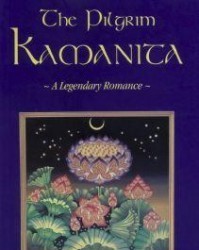
Pilgrim Kamanita – A Legendary Romance
Pilgrim Kamanita - A Legendary Romance. In 1917, the two Danish authors Karl Gjellerup and Henrik Pontoppidan shared the Nobel Prize in Literature. Karl Gjellerup is the least known but wrote some fantastic works on diverse subjects. He wrote in German and here is a surprising work of literature he wrote on Buddhism. It is about the journey of Kamanita, an Indian merchant's son, from earthly prosperity and sensual romance, till his meeting with a stranger monk who is Gautama Buddha. In Thailand, The Pilgrim Kamanita is on the school programme. The Pilgrim Kāmanīta’ was published in German in 1906, 16 years before Hermann Hesse published his similar and much more well-known novel Siddartha. This version of The Pilgrim Kamanita is published and edited by Amaro Bhikkhu as a dedication when the Amaravati Buddhist Monastery opened in 1999.
Download the work here (28,3 MB/540 pages):

Pilgrim Kamanita by Karl Gjellerup
You can buy the print version here: Link
Pilgrim Kamanita – A Legendary Romance: An Overview
"Pilgrim Kamanita – A Legendary Romance" is a captivating novel by Nobel Prize-winning Danish author Karl Gjellerup. Set against the backdrop of ancient India, this tale is a profound exploration of love, karma, rebirth, and the teachings of Buddhism.
The Enchanting Encounter
The narrative unfolds with Kamanita, the son of a prosperous merchant, encountering the mesmerizing Vasitthi during a festive celebration—their instant connection and deep-seated love for each other form the crux of the story. However, fate has other plans, and the two lovers are separated by circumstances beyond their control.
Trials, Tribulations, and Teachings
As the story progresses, both Kamanita and Vasitthi navigate a series of challenges. Their journeys are not just physical but also spiritual, as they grapple with the consequences of their past actions, or karma. The teachings of the Buddha play a pivotal role in the narrative, offering insights into the nature of existence, the cycle of rebirth, and the path to enlightenment.
Kamanita's Spiritual Odyssey
A significant portion of the novel is dedicated to Kamanita's spiritual evolution. Following his demise, his virtuous deeds earn him a place in one of the heavenly realms. Yet, even in paradise, he remains tormented by the absence of Vasitthi. His relentless quest for her and his encounters in the celestial realm provide readers with a deep understanding of Buddhist concepts of life, death, and the afterlife.
Conclusion
"Pilgrim Kamanita – A Legendary Romance" is more than just a love story. It's a philosophical exploration of life's deeper meanings, intertwined with the teachings of Buddhism. Gjellerup's masterful storytelling and profound insights into human nature make this novel a must-read for those seeking both romance and spiritual enlightenment.
Read the full article
0 notes
Text
Efemérides literarias: 24 de julio
Nacimientos
1621: Jan Andrzej Morsztyn, poeta y escritor polaco (f. 1693).
1802: Alejandro Dumas, padre, novelista y dramaturgo francés (f. 1870).
1831: Juan Antonio Mateos, dramaturgo, novelista, poeta, periodista y político mexicano (f. 1913).
1857: Henrik Pontoppidan, escritor danés, premio nobel de literatura en 1917 (f. 1943).
1867ː Consuelo Álvarez Pool, Violeta, telegrafista,…

View On WordPress
0 notes
Text
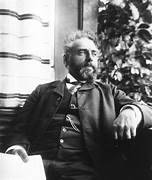
Alredered Remembers Danish writer and 1917 Literature Nobelist Henrik Pontoppidan, on his birthdeay.
"After a summer trip to Switzerland, which was rich in experiences, I started writing. In the beginning, I aimed at descriptions of nature and folk life until, as the years passed, the description of man became my chief interest. " -Henrik Pontoppidan
0 notes
Photo
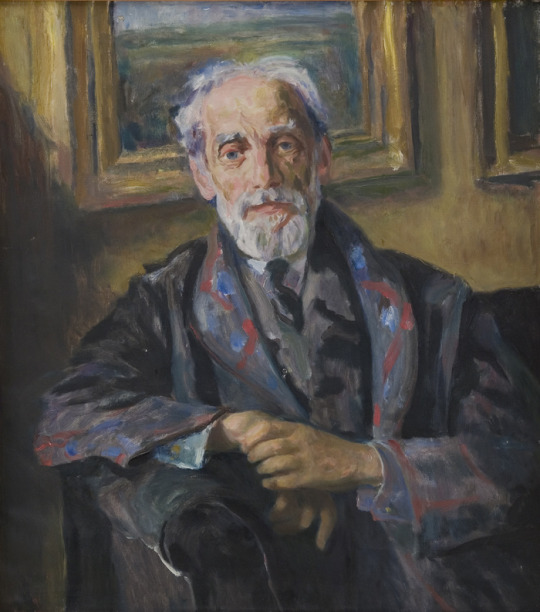
Danish painter, Sigurd Swane, was born June 16, 1879 (d. 1973). Swane studied at the Danish Royal Academy of Art, and visited Paris. Here Impressionism and esp. Fauvism had an impact on him, as evidenced by his early landscapes from Odsherred and later Skagen.
He remains a leading Danish colorist, but unlike most of his contemporaries he was not attracted to urban themes in his art, preferring rural motives. After WWII he frequently spent time in Portugal, painting landscapes and rural work scenes.
However, Swane also worked in portrait painting as in the painting above of Danish author Henrik Pontoppidan from 1933 (Statens Museum for Kunst, Ccopenhagen - oil on canvas)
#art#danish artist#sigurd swane#1930s#1940s#1920s#odsherred#skagen#odsherredmalerne#fauvism#impressionism#danish royal academy of fine arts#smk#statens museum for kunst#portrait painting#landscape painting#portugal#wwii#oil on canvas#henrik pontoppidan
20 notes
·
View notes
Photo
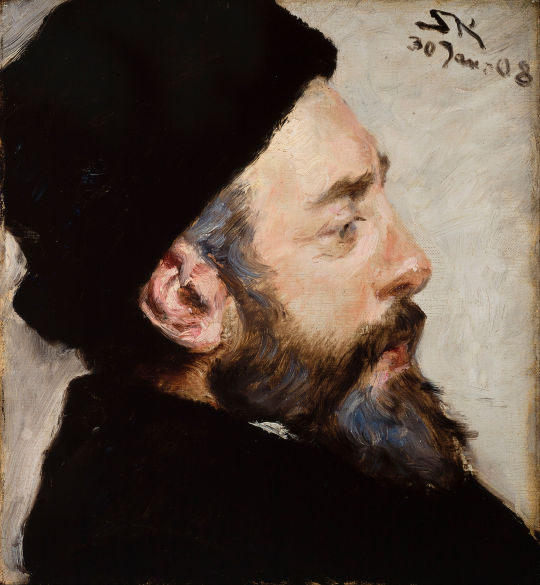
P.S. Krøyer - Henrik Pontoppidan, 1908, oil on canvas
Henrik Pontoppidan, (1857 - 1943) was a Danish writer of novels and short stories. In his later works, he explored Danish social issues with a great deal of authenticity, criticism and irony. Pontoppidan was born in Fredericia, Denmark and was the son of a priest and and educated woman. In 1873, he began studying engineering in Copenhagen. However, he stopped studying to begin work in journalism and writing in Switzerland. In 1879, he began teaching science at a village high school north of Copenhagen that were run by his brother, Mort. His first publication in 1881 was a collection of stories and he was able to support himself through writing thereafter. Pontoppidan traveled extensively in Denmark and abroad.
#P.S. Krøyer#ps kroyer#Peder Severin Krøyer#Henrik Pontoppidan#norweigian painter#skagen painter#skagen#portrait#profile#oil painting#realism#brøndum hotel#1908#1900s#danish writer#danish novelist#denmark
4 notes
·
View notes
Quote
He was drawn to her as a kind of anaesthesia to calm his mind, and he felt that only she could give him the hot and potent potion of oblivion he needed.
Lykke-Per, Henrik Pontoppidan
#literature#quotes#quote#words#lykke per#lucky per#a fortunate man#henrik pontoppidan#aesthetic#love#romance#romantic
12 notes
·
View notes
Text
Há pessoas que são atraídas pela aflição, aquelas que só encontram consolo no desespero e na solidão.
Lucky Per, Henrik Pontoppidan (1917)
54 notes
·
View notes